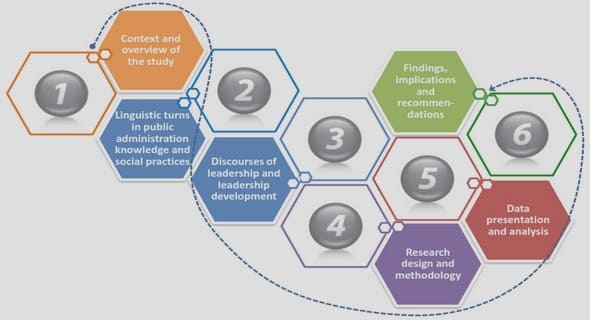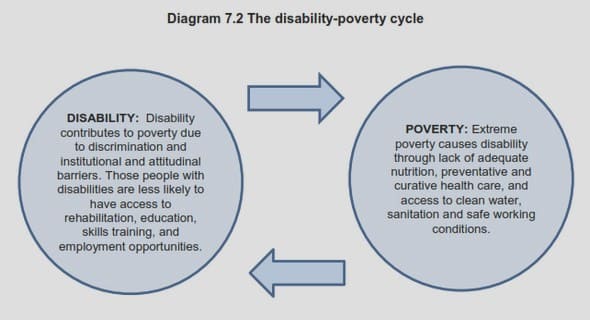Get Complete Project Material File(s) Now! »
Repentance from Sin
Repentance, the abandonment of sin (Erickson 1985:935), is based upon a feeling of godly sorrow for evil done. The main Hebrew word to describe this repentance is shuv, “to go back again” or “to return” (Würthwein 1967:984; cf Table 4). This word is commonly used in the OT (eg 2 Chr 7:14) for a genuine repentance of people, a conscious moral separation – forsaking sin and entering into fellowship with God (Erickson 1985:936). A serious aspect of the various prophets’ call to repentance is that sometimes they themselves do not see how the people can repent (eg Amos 7:8; 8:2; Hos 5:4; Jer 13:23) (Würthwein 1967:987; Burkhardt 1999:40-43). But God promises that he will finally overcome this resistance by his people and enable them to experience a true conversion, establishing a new covenant in their hearts (Jer 31:33). Ezekiel describes this as the gift of the Spirit of God (Ez 36:26f).
Faith in Jesus Christ
In the same way as repentance is the negative aspect of conversion, turning from one’s sin, so faith is the positive aspect, trusting in the promises and the work of Christ. The Hebrews conveyed the idea of faith with verb forms, the most common one being aman. It means “to consider as established, regard as true, or believe” (Erickson 1985:938f). It conveys the idea of confident resting upon someone or something, or it may designate giving assent to a testimony (:938f). It is interesting to note that in the story of the Patriarchs the concept of conversion is not present, but the concept of believing is, as can be seen in the reaction of Abram to the promise of a son (Gen 15:6) (Burkhardt 1999:39; Jepsen 1977a:305).
Conversion is Both, Once and Continuous
The word conversion has been used in Christian history in two main ways. On one hand conversion is seen as relating to an externally recognizable adhesion to the Christian faith, an external act of a religious change. On the other hand the word is used to refer to a critical internal religious change in a person or persons within the Christian community (Walls 2004:2). Conversion is not only a one-time decision to follow Christ. It also refers to the repentance of Christians when they have done wrong, or their response when they are called to a specific ministry (Burkhardt 1999:57ff; Bloesch 1984). The thrust of the biblical understanding of conversion as ‘repentance and faith in Christ’ aims, as we have seen, at a basic reorientation of one’s life, a turning from sin and a turning to God. In this sense conversion is a response to evangelism (Bosch 1991:413).
Conversion – Human Decision or Divine Gift?
Triebel (1976:209) is right when he states that the proclamation of the gospel expects conversion. This is what happens worldwide and it can be recorded empirically. People enter into a new relationship with the one God and from this their whole life is being changed. Reports from different countries and psychological observations show that people need to make a decision after they have heard the Christian message. Biblically this can be seen in the fact that the call to returning, or to conversion, is often put in the imperative. It demands a decision. The place of this decision is in the conscience (:210).
Definition of Conversion
In his excellent book about religious conversion, Rambo (1993:xii-xviii) explains that he understands ‘genuine’ conversion as a total transformation of the person by the power of God. This transformation is influenced by social, cultural, personal, and religious forces. But conversion needs to be radical, which means it strikes at the root of the human predicament. He then defines conversion in the following way (:5): Conversion is a process of religious change that takes place in a dynamic force field of people, events, ideologies, institutions, expectations, and orientations. In this book we will see that (a) conversion is a process over time, not a single event; (b) conversion is contextual and thereby influences and is influenced by a matrix of relationships, expectations, and situations; and (c) factors in the conversion process are multiple, interactive, and cumulative. There is no one cause of conversion, no one process, and no simple consequence of that process.
Conversion and Converts in the Sudan
Gaudeul (1999:18) calls the phenomenon of inter-religious conversions a sign of a healthy society. Christians and Muslims should stop viewing each other as rivals or a danger to the national identity. If pressure is needed to keep people within their religious community, it just shows that faith is missing. Officially the Government of the Sudan claims to offer religious freedom. For example, the Embassy of the Sudan in Washington (Sudan Embassy 2004) refers to the conversion of a Muslim Imam in 1995 as proof of religious tolerance in the country. In the same report Article 24 of the 1998 Constitution of the Republic of the Sudan is quoted: Everyone has the right to freedom of conscience and religion and the right to manifest and disseminate his religion or belief in teaching, practice or observance. No one shall be coerced to profess a faith in which he does not believe or perform rituals or worship that he does not voluntarily accept.
Table of Contents (Amplified) :
- Preface
- Acknowledgements
- Table of Contents (Short)
- Table of Contents (Amplified)
- List of Tables
- List of Figures
- List of Abbreviations
- 1. INTRODUCTION
- 1.1 Preamble
- 1.2 The Background of the Country
- 1.3 Need for and Significance of the Study
- 1.4 Rationale of the Study
- 1.5 Demarcation of the Study
- 1.6 Logical Sequence and Overview of the Chapters
- 2. CONVERSION IN MULTIPLE PERSPECTIVES
- 2.1 Biblical and Theological Understanding of Conversion
- 2.1.1 Repentance from Sin
- 2.1.2 Faith in Jesus Christ
- 2.1.3 Consequences of Conversion
- 2.1.4 Different Models of Conversion
- 2.1.5 Implications for Evangelism
- 2.1.5.1 Conversion is both, Once and Continuous
- 2.1.5.2 Conversion – Human Decision or Divine Gift?
- 3. RESEARCHING CONVERSIONS IN THE SUDAN
- 3.1 Research Question and Methodology
- 3.2 Sampling Design and Procedures
- 3.3 Ethical Considerations
- 3.4 Introduction of the Interviewees
- 3.5 Data Collection
- 3.6 Data Processing and Analysing Procedures
- 4. REASONS FOR AND FACTORS LEADING TO CONVERSION
- 4.1 Reasons for Conversion
- 4.1.1 Analysis – Reasons for Conversion among Sudanese
- 4.1.1.1 The Main Reasons for Conversion
- 4.1.1.2 Islamic Religious Life and its Influence on the Conversion
- 4.1.1.3 External Reasons for Conversion: Crisis Experiences
- 4.1.1.4 Internal Reasons for Conversion: Spiritual Issues
- 4.1.2 Validation of Results
- 4.1.2.1 Spiritual – Cognitive Reasons
- 4.1.2.2 External Reasons for Conversion
- 4.1.3. Reasons for Conversion: Summary of Analysis
- 4.1 Reasons for Conversion
- 5. STAGES, PROBLEMS AND RESULTS OF CONVERSION PROCESSES
- 5.1 Stages in Conversion Processes
- 5.1.1 The Cognitive and the Affective Dimension of Decision Processes
- 5.1.2 Analysis – Stages in the Decision Processes among Sudanese
- 6. CONCLUSIONS AND RECOMMENDATIONS
- 6.1 No Simple Standard Formulas
- 6.2 The Need to Communicate the Gospel
- 6.3 The Role of Non-Verbal Ministries of the Church
- 6.4 Putting Faith and Practice in Context
- 6.5 Incorporation into the Body of Christ
- 6.5.1 Incorporating Converts in Established Churches
- 6.5.2 Forming Culturally Appropriate Churches
- 6.5.3 Encouraging Church Planting Movements
- 6.6 A Place for Converts in a Multi-Cultural and Multi-Religious Society
- 6.7 Recommendations for Further Research
- 6.8 Epilogue
- BIBLIOGRAPHY
- APPENDICES
- Appendix 1: Structured Interview for MTh-Research
- Appendix 2: A Theory of Stages in the Conversion Processes of Muslims
- Appendix 3: The Converting Process According to Rambo
- Appendix 4: Models of Stages in the Spiritual Decision Process
- Appendix 5: Research Projects on Conversion of Muslims Used for Analysis
- Appendix 6: Transcript of Interviews
GET THE COMPLETE PROJECT
CONVERSIONS FROM ISLAM TO CHRISTIANITY IN THE SUDAN

